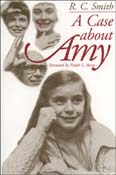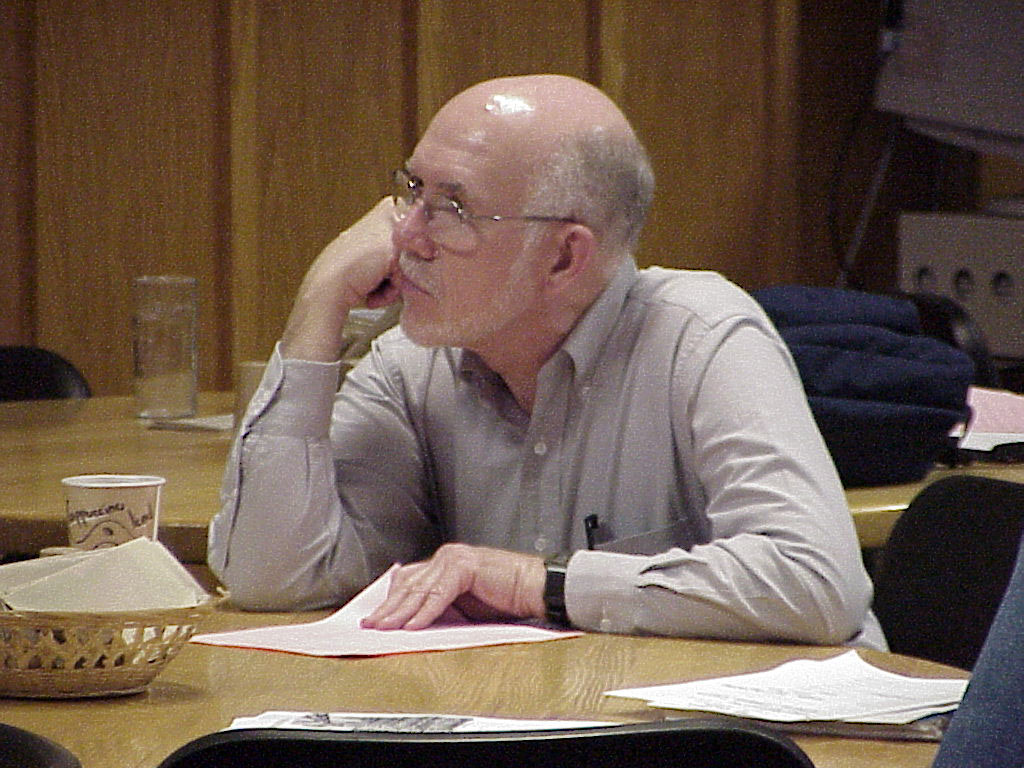|
Dr. Edward Peters
Updated 26 dec 2012
This website is best viewed 1152 x 864
As he passed by, Jesus saw a man blind from his birth. His disciples asked him, "Rabbi, who sinned, this man or his parents, that he was born blind?" Jesus replied, "It was not that this man sinned, or his parents, but that the works of God might be made manifest in him." John 9: 1-3.
+
Amy June Rowley was the subject of a US Supreme Court decision in 1982.
Dominican Missionaries for the Deaf
Patricia McNicholas, “Planning children’s liturgies for the Deaf” The Living Light 13 (1976) 101-117
Alverna Hollis, “What you can learn from Deaf worshippers” Modern Liturgy 15/8 (November 1988) 16-19
|
Resources on Religious Sign Translation Committee, NCOD
These pages are a general resource for the project to develop an accurate American Sign Language translation of the Mass directly from the Latin editio typica. They do not necessarily represent the positions or opinions of the National Catholic Office for the Deaf or any person(s) associated therewith.
1. NCOD Religious Sign Committee Members (as of February 2007)
National Catholic Office for the Deaf (NCOD) 7202 Buchanan Street, Landover Hills, MD 20784-2236 VOICE/FAX: 301-577-1684; TTY/VP: 301-577-4184
Meetings
2. Canon law governing liturgical translations and publications
The current Code of Canon Law (Codex Iuris Canonici) is the basic administrative-governing document of the Roman Catholic Church. It went into effect in 1983, replacing the first Code of Canon Law that had been in force since 1917.
1983 CIC 826. § 1. The prescripts of can. 838 are to be observed concerning liturgical books. § 2. To reprint liturgical books, their translations into the vernacular, or their parts, an attestation of the ordinary of the place where they are published must establish their agreement with the approved edition. § 3. Books of prayers for the public or private use of the faithful are not to be published without the permission of the local ordinary.
1983 CIC 838. § 1. The direction of the sacred liturgy depends solely on the authority of the Church which resides in the Apostolic See and, according to the norm of law, the diocesan bishop. § 2. It is for the Apostolic See to order the sacred liturgy of the universal Church, publish liturgical books and review their translations in vernacular languages, and exercise vigilance that liturgical regulations are observed faithfully everywhere. § 3. It pertains to the conferences of bishops to prepare and publish, after prior review of the Holy See, translations of liturgical books in vernacular languages, adapted appropriately within the limits defined in the liturgical books themselves. § 4. Within the limits of his competence, it pertains to the diocesan bishop in the Church entrusted to him to issue liturgical norms which bind everyone.
1983 CIC 928. The Eucharistic celebration is to be carried out in the Latin language or in another language provided that the liturgical texts have been legitimately approved.
-------------------------------------------------------------------------------------------------------------------
3. Sign Language use at Mass (1917 CIC 819)
A) The following is a private letter from the Consilium for the Implementation of the Constitution on the Liturgy addressed to Abp. John F. Dearden of Detroit, Chairman of the U. S. Bishops’ Commission on the Liturgical Apostolate, issued 10 December 1965.
Sources: Canon Law Digest VI: 552-553; The Jurist 26 (1966) 388-389; Bishops' Commission on the Liturgical Apostolate, Newsletter 2:4 (April 1966) 30-31; International Commission on English in the Liturgy, Documents on the Liturgy 1963-1979 (DOL) n. 274.
C) Which Creed at Mass: The substitution of the Apostles Creed for the Nicene Creed at Masses with Deaf congregations was requested by the US bishops in November 1966 and approved by the Holy See in January/February 1967. See Bishops' Commission on the Liturgical Apostolate, Newsletter 2:11 (November 1966) 58-59 and Newsletter 3:3 (March 1967) 73, respectively. This approval eliminated the awkwardness of having the priest recite the Nicene Creed while a deaf congregation signed the shorter Apostles Creed. Comment: This ruling has probably been superseded by later liturgical norms governing selection of the Creed, but the matter could be researched.
-------------------------------------------------------------------------------------------------------------------
4. An interesting observation by Dr. Mohrmann of the University of Nijmegen: “Sacral languages are found in all periods and among all peoples. They are the result of profoundly human aspirations and ideas concerning the relationship with the divine. There is a universal tendency toward linguistic differentiation in intercourse with divinity. It is as though language were sanctified by this contact. In the sacral acts of many peoples, there is a noticeable bent to employ a linguistic form of expression that accentuates the solemn, extraordinary character of the sacred act. There is an obvious desire to achieve a departure from the everyday, a differentiation from the common language. This is often accomplished by using archaic forms and sometimes foreign languages…. Sometimes a sacral mode of expression is obtained by the deliberate stylization of the native language…. One can see in all such sacral languages the desire to leave behind the forms of everyday expression when seeking contact with the godhead. This practice also reveals the consciousness that in prayer one enters another world.” Christine Mohrmann, “Latin in the Church”, New Catholic Encyclopedia 8 (1967) 412-417, at 414.
-------------------------------------------------------------------------------------------------------------------
5. Materials related to the Creed
A) In honoring the 1900th anniversary of the martyrdom of Sts. Peter and Paul, Pope Paul VI celebrated a solemn liturgy and issued an apostolic letter motu proprio Solemni hac liturgia (30 June 1968), Acta Apostolicae Sedis 60 (1968) 433-455, in which he set forth a version of the Creed that combined dogmatic assertions with brief commentary-explanations. Known in English as “The Credo of the People of God”, some of the points Pope Paul makes regarding the Trinity might help us in our translation work. Below are Credo paragraphs 8-13 (citations omitted).
B) The First Vatican Council (1869-1870) issued a "Dogmatic Constitution on the Catholic Faith" (Session 3, 24 April 1870), one section of which addresses some points that came up in our discussion. The Constitution stated: "The holy, Catholic, apostolic Roman Church believes and professes that there is one true and living God, the Creator and Lord of heaven and earth. He is almighty, eternal, beyond measure, incomprehensible, and infinite in intellect, will and in every perfection. Since he is one unique spiritual substance, entirely simple and unchangeable, he must be declared really and essentially distinct from the world, perfectly happy in himself and by his very nature, and inexpressibly exalted over all things that exist or can be conceived other than himself." There are some concise and reliable explanations of what these technical terms mean in John Hardon, The Catholic Catechism (Doubleday, 1975) 55-58. For more detail, see, e.g., G. Smith, ed., The Teaching of the Catholic Church, in 2 vols., (Macmillan, 1955), I: 79-142, or Catechism of the Catholic Church nos. 26-1065.
C) Comparison of Apostles Creed (e.g., Rosary) & Niceno-Constantinopolitan Creed (most Sundays)
-------------------------------------------------------------------------------------------------------------------
6. "Consubstantial"
"Consubstantialis is a word coined by the Church (probably by the Carthaginian theologian, Tertullian, 160? - 230?) to describe a crucial aspect of Trinitarian doctrine." John Collins, A Primer of Ecclesiastical Latin [1985], (Catholic University of America, 1988) 168.
-------------------------------------------------------------------------------------------------------------------
In a sermon addressed to some newly-baptized Christians about to make their First Communion, St. Augustine (+ 430), Bishop of Hippo, and thus a North African like St. Cyprian, declares: “After the greeting which you know, that is, Dominus vobiscum, you hear Sursum cor … When you have heard the priest say Sursum cor, you reply Habemus ad Dominum… And because God, and not your own strength, makes it possible for you to lift up your hearts, therefore follows (after you have said that you have lifted up your hearts to the Lord)… Domino Deo nostro gratias agamus.” In another similar sermon, St Augustine instructs the neo-converts as follows: “Therefore, when Sursum cor is said, you answer Habemus ad Dominum. And that you might not attribute this lifting up of your hearts to the Lord to your own strength, your merits, or your works—since it is a gift of God to have one’s heart lifted on high—the celebrating bishop or priest continues and says… Gratias agamus Domino Deo nostro… and you testify saying Dignum et iustm est. Source: Charles Lewis, The Silent Recitation of the Canon of the Mass, diss. excerpt (Gregorianum, 1962) 16.
Harlan Lane, When the Mind Hears: a History of the Deaf [1984] (Vintage Books, 1989).
Jerome Schein and David Stewart, Language in Motion: exploring the nature of sign (Gallaudet University,1995).
C. Valli, et al., Linguistics of American Sign Language: An Introduction [1992], 4° ed., (Gallaudet University, 2005).
Scott Liddell, Grammar, Gesture, and Meaning in American Sign Language (Cambridge, 2003).
Gwyn Richards, “Deaf People, the Pre-Nuptial Inquiry, and Annulments” Canon Law Society of Great Britain and Ireland Newsletter, n. 113 (March 1998) 58-63.
|

